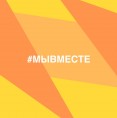- Opening of the exhibition «Celebrating the first anniversary of October in Petrograd»
- Opening of the exhibition «I will tell you an anecdote»
- Exhibition “Material evidence”
- Meet our new logo!
- Opening of the exhibition “Bamboo and Birch”
- Opening of the exhibition ro the 100-year formation of Czechoslovakia
- The presentation of Vereshchagin's painting «The execution of Conspirators in Russia»
- FIFA World Cup 2018 in Russia
- Opening of the exhibition «A Must-Visit»
- Opening of the exhibition «Karl Marx: Image and Symbol»
- Opening of the exhibition «Backed by the Typewriter Clicks: People and Events»
- Opening of the exhibition “I swear that I will faithfully serve the people!”
- Opening of the exhibition “But we are in commune now!”
- Opening of the exposition «The Empire on the Way to Modernisation. Russia in the XIXth – Early XXth Century»
- Главная страница
- -News
- -Opening of the exposition «The Empire on the Way to Modernisation. Russia in the XIXth – Early XXth Century»
Opening of the exposition «The Empire on the Way to Modernisation. Russia in the XIXth – Early XXth Century»
The exposition showcases the history of major political and economic reforms of 19th- early 20th centuries in Russia. Rare archival documents, photos, posters, magazines and newsreels will show the inner and outer factors that urged the authorities to implement reforms. You will see the weapons of the period of the first Russian Revolution, the shackles worn by Chernyshevsky [N. G, Chernyshevsky (1828 – 1889) - a revolutionary democrat, materialist philosopher, critic], the children’s toy cubes, used to deliver the banned Iskra newspaper to Russia and other unique exhibits.
«Modernisation in Russia started from the abolition of serfdom and a number of other reforms but it has not been finished until 1917, - said Evgeni Artemov, director of The State Museum of Political History of Russia, at the opening of the exposition. – All problems, Russian society was worried about 160 years ago, are relevant nowadays». Modernisation is still a key issue for understanding the historical choice of Russia, search for ways to freedom and democracy, because only in a civil society it is possible to manage timely urgent updates and transformations, considers Artemov. He reminded that today there are also proposals for reforms in a sphere of economics, state administration and judicial branch in the programs of presidential candidates. And all of these are similar to the epoch of Grand Reforms of Alexander II.
New museum`s exposition is very relevant, agrees Julia Kantor, Doctor of Historical Sciences, Professor of The Herzen State Pedagogical University of Russia. The exposition reminds that revolutions happen when state power doesn`t hear the society and opposition, tries to crush or break it. According to Kantor, it can cause bloodshed and revolution.
«The exposition is very interesting, there are obvious parallels with the problems that we have today in our society», - considers Dmitri Travin, candidate of economic sciences, scientific director of The Center for modernisation studies. Modernisation is not only reforms and changes in the economy but also a response in a society to these changes. When contradictions become intense, it is necessary to negotiate with authorities. At the exposition we can see a detailed story how the opposition was formed and a history of the tragic fate of the oppositionists, said Travin.
Alexander Kalmykov, the head of the group that created exposition, thanked everyone who helped in its creation including the staff of the design studio «Laika». According to him, the opening of this exposition has been long time ago in the museum`s plans, it completes the formation of a single exposure space which includes other expositions – «Man and State Power in Russia from 19th to the 21st Centuries», «Revolution in Russia: 1917-1922» and «The Soviet Epoch: Between Utopia and Reality».
















